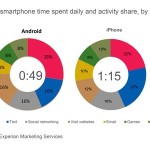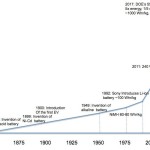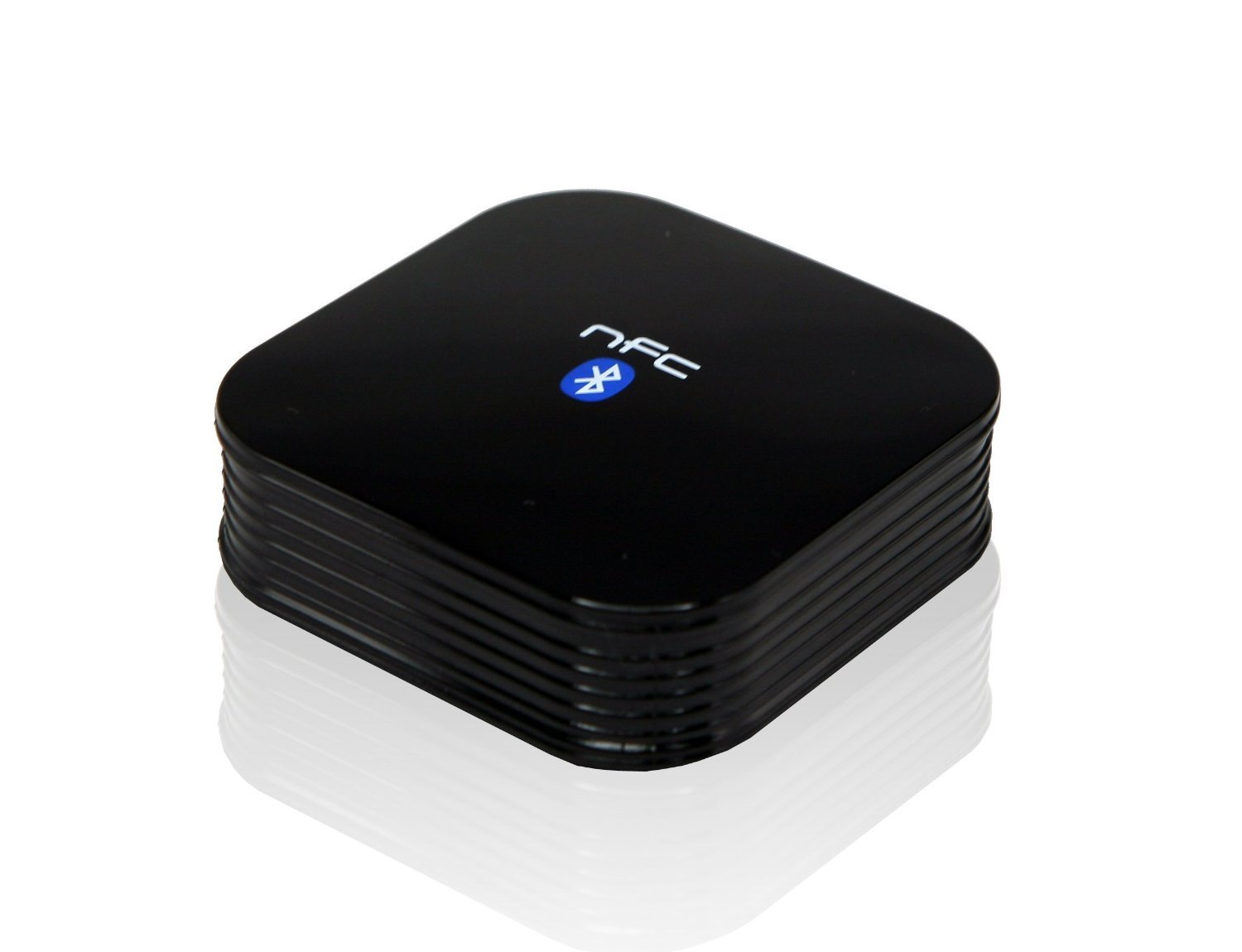
The battery in your smartphone, tablet, or other mobile device, is not as terrible as you may think. Now don’t get me wrong, I too feel like I’m constantly plugging my phone into a charger. I even keep a portable charger or two with me at all times. This is in addition to having three chargers at home, one at work, and a car charger. I constantly wish that smartphone battery life would improve. Here’s the secret; it is improving. The problem is that battery life is not improving faster than the phones that are sucking power from them.
Computers are doubling in power every two years. With each upgrade they require more and more power to keep all the apps, websites, music streams, and data services running. We do more with our phones now than we did ten years ago. Much, much more. Today the average person spends an hour using their smartphone per day. This may not seem like much, but take a look at this chart breakdown done by Experian in 2013.
Talk, text, email, and website views have been on phones for over a decade. The two biggest sections on the above chart are social networking and games. These guys suck up battery life. Social networking sites such as Pinterest and Facebook are constantly communicating with servers across your network. Games can drain the battery faster than anything else. It’s worth noting that Netflix can now be streamed over phones and apps. Microsoft Office and PDF files also tend to be resource hogs. Google Chrome has a bug which causes battery life to drain constantly. All of these things add up to a lot of pressure being placed on the tiny little battery powering your phone.
Batteries today are extremely compact. And the physics behind what makes batteries work leaves a limit to how small and dense the battery can be. As you can see from the graph below, prior to 1992 there wasn’t much advancement in battery power. Then the lithium-ion battery hit the shelves and suddenly compact devices became easier to make. However we’re reaching the limit of what the current standards of battery size and capacity can handle.
So where does this leave us? There are several solutions going down the pipeline, from quantum batteries to Graphene batteries. However there are two measures which stand out as practical and applicable today. Google has been testing Project Volta, a new app that will roll out with the new version of Android OS (sorry iPhone users). This free app will improve battery life by up to 36% by giving users an easy interface to see exactly what is running on their phone and what they can safely turn off. While this is more of a stop-gap measure, it will provide a noticeable boost to battery life. Hopefully it will also push Apple into releasing one that actually works.
There has also been some major lithium-ion advancements which will boost the technology and give these batteries a longer life. These new techniques are expected to be out within the next couple of years. I wouldn’t expect it on the Galaxy s6 but maybe the s7 or s8. Combined with the more efficient software, this should buy your battery the improvement that you actually need….for the next five or ten years anyway.
Hopefully that should be enough time for one of the wilder battery discoveries to get to a practical level. I for one am rooting for quantum batteries. I’d love a battery that could wirelessly charge from anywhere in the galaxy, although I expect graphene will be the big winner of the next generation of battery power.
Until then, keep your wall charger ready, and your car charger, and your spare battery pack, and your laptop charger, and…yeah, I can’t wait either.






